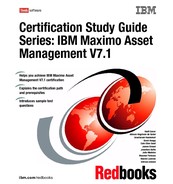Chapter 10. Other configuration options 199 – Current date and time of the transaction – Rowstamp – Unique e- Audit transaction ID – Unique e- Sig transaction ID if electronic signature is enabled – The key values columns for the record, even if those columns are not enabled for electronic audit ( for example, the work order number is recorded even when another attribute in the WORKORDER object triggers the electronic audit) 10.8 Actions Actions are scheduled events that occur when a record leaves a workflow node. The Actions application is used to create and manage actions and action groups. Actions and action groups can be used with escalation, service level agreement ( SLA), and workflow processes. An action group contains multiple actions that are initiated or processed in sequence. 10.8.1 Working with action records You may use the Actions application to create and manage actions and action groups. Actions and action groups can be used with escalation, service level agreement ( SLA), and workflow processes. An action is an event that is triggered when the escalation engine finds records that meet the conditions defined by an escalation point, SLA, or workflow process. You can create actions that initiate an application action, change the status of a record, run a custom class or a specified executable program, or set the value of a field on a record. You use the Actions application to create and manage both individual action records and action group records. An action group contains multiple actions that are initiated or processed in sequence. Workflow processes use actions to move records through a process and to trigger events, for example, status changes. Creating records in the Actions application lets you define actions once, then reuse them when creating multiple Workflow processes. Note: Audit records are written in the selected database table name preceded by A_ ( which is the letter A followed by an underscore character).
200 Certification Study Guide Series: IBM Maximo Asset Management V7.1 Understanding actions and escalations An escalation is a mechanism for monitoring time- sensitive records automatically, which can take actions or send notifications when a record reaches a defined escalation point. You create the actions that are associated with an escalation record in the Actions application. Creating action records You can create several types of actions by using the Actions application. When you create an action record, you specify an action type to help determine what kind of action to take when the action is encountered in a process. Action types An action can be one of the following types: APPACTION This type specifies that an application action be initiated. The type requires values in the Object and Value fields. When creating an APPACTION type action, you specify one of the following actions if it is available for the specified object: – Apply SLA: Apply the specified service level agreement. – Create Change: Create a change work order. – Create Incident: Create an incident ticket. – Create Problem: Create a problem ticket. – Create Release: Create a release work order. – Create SR: Create a service request ticket. – Create WO: Create a work order. – WF Accept: Accept the record and route it to the positive path in the workflow process. Also known as workflow auto- accept). – WF Escalate: Escalate the record in the Workflow process and reassign the assignment to its escalation role. Note: Actions can be triggered by escalations, and escalations can trigger workflow processes. Note: The Type and Action fields are required in order to create an action.
